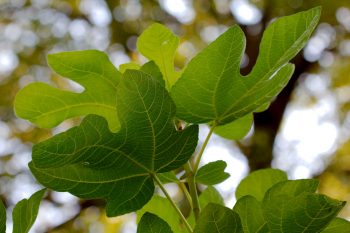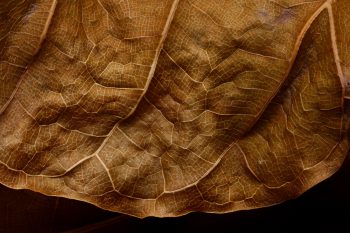I was down at my mom’s after work and looked around for something to photograph. There isn’t really anything in bloom in her yard right now, but the leaves on the fig tree that dad planted caught my eye. The common fig, Ficus carica, is not completely hardy in our area but planted in a protected spot and given some winter protection, it can be successfully grown. My grandparents, in southern North Carolina, got a lot more figs off their much larger tree. This tree never produced enough figs on its own to make any significant quantity of preserves so mom had to supplement it with figs bought at the market.
Tagged With: Fig
Fig Leaves
Categories: Flowers and Plants
Tags: Edible, Ficus, Ficus carica, Fig, Fruit, Green, Leaves
Comments Off on Fig Leaves
Ficus lyrata Leaf
Dorothy rooted a leaf from a fiddle-leaf fig (Ficus lyrata) a while back and it’s done pretty well. We had it in the kitchen for a while and it got strong enough to stand without support, which is nice. We have since moved it to the dining room, where it’s a little less in the way, but the lower leaves don’t get any sun and they recently dried up and fell off. I really love the texture of the leaves as well as the patterns of their veins. After taking this photo (and some others) I happened to leave them on the sideboard. Cathy wondered where in the world these huge leaves had come from and what they were doing there. They’ve been thrown away now.
Categories: Flowers and Plants
Tags: Brown, Dried Leaf, Ficus, Ficus lyrata, Fiddle-leaf Fig, Fig, Houseplant, Leaf
Comments Off on Ficus lyrata Leaf


